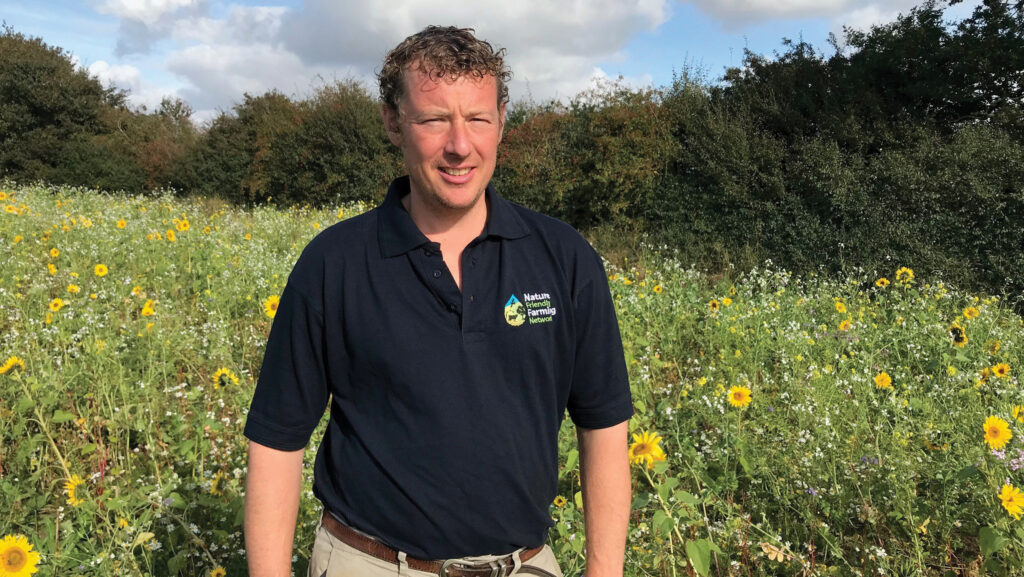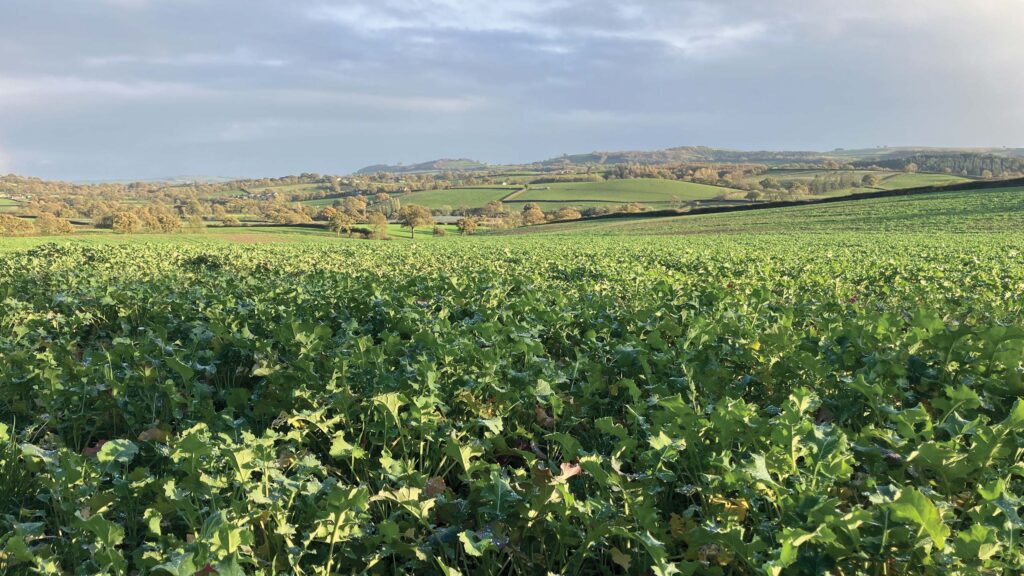How two farmers integrate strategic glyphosate in rotations
 © GNP
© GNP Use of glyphosate – the most widely applied herbicide in the UK – has surged over the past three decades.
In recent years that increase has been driven by the shift towards min-till systems which often rely on chemicals rather than cultivations for primary weed control.
See also: Glyphosate licence extended in GB until December 2026
However, the focus is shifting once again and this time the spotlight is on sustainable use of synthetic inputs in the name of soil biology and crop health.
As input costs climb and fears of chemical resistance build, many growers are looking at responsible methods of weed control.
We spoke to two growers who are strategically integrating glyphosate into their rotations in a sustainable manner.
David Lord, Earls Hall Farm, Essex

© David Lord © David Lord
Over the past decade, Essex farmer David Lord has adapted his entire cropping system to prioritise healthy soils and strategic glyphosate applications.
Although his total glyphosate use hasn’t changed, how and when it is applied has evolved considerably, to help optimise grassweed control.
“We’re not trying to farm without glyphosate,” David says. “But we are farming in a way that means we rely on it less and use it better. It’s about finding the balance.”
David’s previous establishment method revolved around multiple passes of low-dose glyphosate rates to stale seed-beds, but now he focuses on single, robust sprays to destroy cover crops.
“In our previous system, we would apply two or three sprays per field at 2 litres/ha on to bare soil,” he says.
Healthier, more oxygenated soils with good levels of organic matter can degrade glyphosate faster so it does not persist in the environment for as long
This approach was exposing soils to continued chemical strain and biological shutdown, as well increasing resistance pressure.
Now, David is applying a single pass of 3-4 litres/ha to destroy cover crops, before direct drilling with a Horizon DSX drill, in a more diverse rotation.
Rather than applying glyphosate to bare soil, it is applied to the cover crop, which has been priming soil microbiology and soil structure.
“By integrating cover crops and spring cropping we have much more biologically active soils which can better deal with any negative consequences of glyphosate,” he says.
Healthier, more oxygenated soils with good levels of organic matter can degrade glyphosate faster so it does not persist in the environment for as long.
“By looking after our soils 364 days a year, the one day that we apply the product, I hope soils are resilient enough to bounce back,” he says.
The conventional advice to combat glyphosate resistance is to maintain robust dose rates, apply in good growing conditions at the right growth stage of the target weeds, and pay close attention to pH buffering of the water.
David says: “This is good scientific advice on how to use glyphosate responsibly, but misses the point by a long way: we should be talking about when best to use it and how to reduce our need for it.”
Spring cropping shift
Farming on heavy soils, David historically grew all winter-sown crops using intensive cultivation methods. However, over time, problems began to surface.
Grassweeds, particularly blackgrass, became increasingly difficult to control. Soils were being overworked, weed pressure was escalating, and chemical and machinery costs were steadily rising. He knew the system had to change.
The first major shift came with the introduction of spring cropping, now accounting for about 40% of his rotation. This helped to break the lifecycle of grassweeds.
Cover crops gave the soil a chance to recover and build structure, keeping weeds at bay through natural competition.
“If we have a frost, we will roll the covers to mechanically destroy broadleaf weeds. This is ineffective at controlling the grassweeds so I still need glyphosate, but I can opt for a 1 litre/ha lower dose, making it 3 litres/ha,” he says.
Inter-row hoeing
David recently bought a Carre inter-row hoe, supported by a Farming Productivity and Technology Grant. He intends to use the camera-guided tool in spring crops, where it can work within 2cm of cereal rows.
Wildfarmed spring wheat is an important part of the rotation, and this prohibits in-crop applications of herbicides, fungicides and insecticides.
Also grown on the farm is quinoa, which has no approved pesticides, demanding yet another level of care and system-based weed suppression.
The hoe is part of a broader strategy to control weeds without relying solely on chemistry, which he plans to extend to autumn cropping if successful.
David is also exploring the concept of a clover living mulch grown beneath crops. Early efforts to establish clover this spring proved challenging due to the dry conditions.
He is instead trialling sowing clover with the cover crops post-harvest. Winter wheat is then direct drilled into this living mulch, which is expected to outcompete grassweeds while maintaining soil cover and biological activity.
David also integrates sheep grazing into the system, using livestock to manage cover crop biomass. A local straw-for-muck exchange brings valuable organic matter back onto the land, enhancing nutrient cycling.
Tom Partridge, Park Farm, Devon
Tom Partridge is aiming to cut as many glyphosate passes as possible. Strategic use of the plough and integration of livestock into the rotation are key to helping him achieve this.
“I’m completely against using glyphosate when it’s not needed. It’s a good tool to have, but it must be used in moderation,” says Tom, who farms beef, sheep and arable near Crediton, Devon.
The plough is the main tool for establishment and weed control on the farm.
Winter cereals are drilled from mid-October onwards to naturally reduce weed pressure, and Tom notes the farm has not used a pre-emergence herbicide spray on cereals for the past 15 years.

Stubble rape on Tom Partridge’s farm © MAG/Emma Gillbard
A cover crop of stubble rape was planted following this year’s winter wheat crop, and this will be grazed by sheep over winter and then ploughed in. This eliminates the need for glyphosate ahead of maize planting in the spring.
“We will use a pre-emergence spray in the maize and monitor crops closely,” he says. “It just doesn’t make sense to spray off with a glyphosate spray and then spray again for a pre-emergence so soon after.”
Winter beans will be planted soon. The plan is to direct drill the crop into spring barley stubble.
“We will burn off any spring barley volunteers with glyphosate and direct drill the beans with a Claydon drill,” says Tom
This should save on establishment costs and give the soil a break from ploughing, helping to build-up soil structure, while keeping overall glyphosate use to a minimum.
Soil conditions are monitored closely ahead of planting to ensure the optimum establishment method is selected – whether that’s a min-till approach or using the plough.
The future of glyphosate
The authorisation of glyphosate use in Great Britain has been extended until 15 December 2026 by the Health and Safety Executive.
While the longer-term future of the herbicide remains uncertain, the decision allows for a comprehensive review of glyphosate’s safety while British farmers continue using the product.

